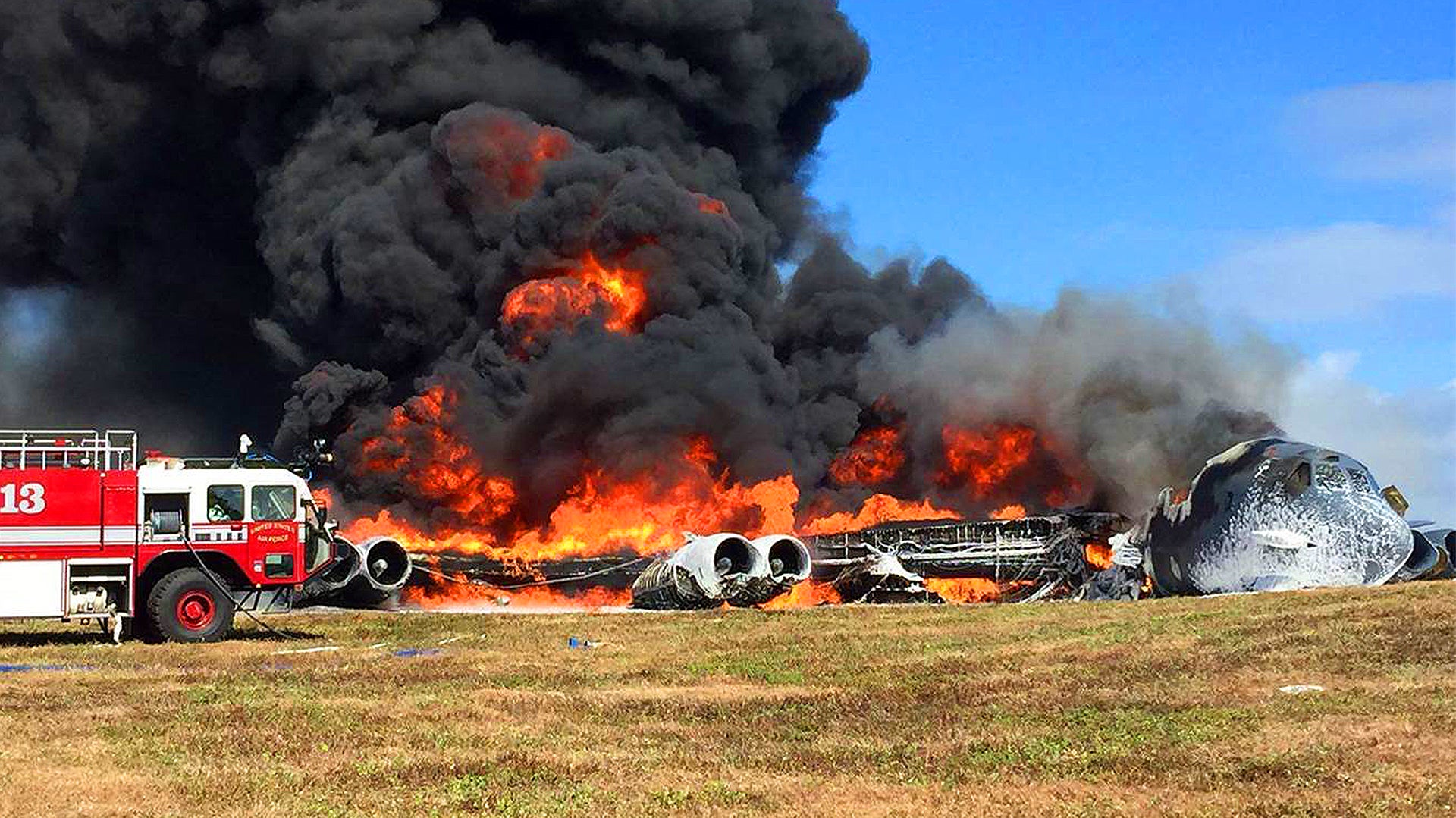Yesterday morning, a B-52H home-based out of Minot AFB in North Dakota crashed along the flightline at Andersen AFB in Guam. Pictures from the scene show the aircraft broken and in flames. Amazingly, all the aircraft’s six crew members were able to get out of the aircraft unscathed before it succumbed to the flames.
The cause of the crash is unclear, but it’s not the first time a heavy bomber was lost while temporarily stationed at Guam as part of the ongoing scheduled rotation of nuclear-capable bombers to the Pacific stronghold.

In 2008, a B-52H went down in waters near the island during a training flight that was supposed to be capped by a flyover for the local celebration of Liberation Day. All six crew on-board “RAIDR 21” were killed. The crash was ruled to have been caused by a malfunctioning trim system.
That same year, one of the USAF’s 21 B-2 Spirits crashed spectacularly during on takeoff [see video below]. Both pilots ejected from the aircraft before it plummeted to the ground between Andersen Air Force Base’s runways. The crash was caused by a malfunctioning air data sensor.

Another near-loss of a B-2 forward deployed to Guam came in February of 2010 when one of the stealth bombers ignited into flame as it was preparing to takeoff. The damage was so bad that it took a total of four years to return the jet to the fleet. A portion of this work was executed on-site at Andersen AFB just so the striken jet could limp back to Palmdale, California for more extensive repairs. The whole ordeal is brilliantly recounted in this Los Angeles Times piece.
The loss of another B-52H for USAF comes at a time when the antique platform is more relevant than ever. The type is currently fighting ISIS over in Iraq and Syria and receiving major upgrades that will make it more effective than ever on the modern battlefield. Even more extensive upgrades may also be in the works for BUFF (Big Ugly Fat Fucker) as the Pentagon pursues an “arsenal ship” as part of its Third Offset strategy.
There are currently 76 B-52s in active service. Recently, one of the 13 B-52Hs in regenerative storage at the Pentagon’s boneyard in Arizona (AMARG) was restored to flying condition to replace a B-52H that burned on the ramp at Barksdale AFB due to an electrical fire. This was the first time a B-52H was brought back from the boneyard after long-term storage. After yesterday’s loss, the Pentagon may reanimate another.

The B-52H fleet, which were all built in the early 1960s, is slated to serve into the middle of the century, and likely beyond that, at which time the aircraft design will be well over a century old.
Contact the author at tyler@thedrive.com
